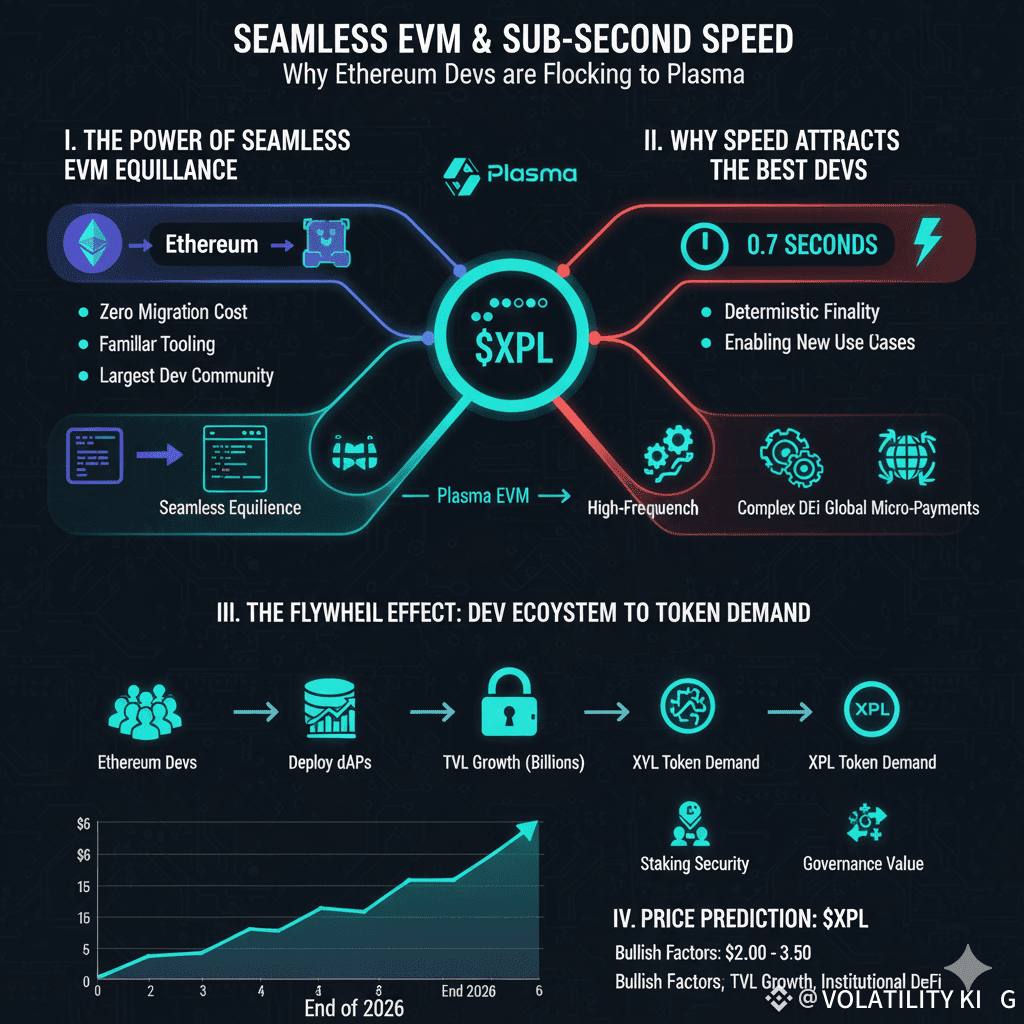
For years, blockchain developers have faced an impossible choice—stay on Ethereum’s secure yet slower ecosystem or move to faster, non-EVM chains that sacrifice compatibility. Plasma ends that compromise. By combining Seamless EVM Equivalence with sub-second finality, it’s redefining what’s possible for developers, institutions, and global finance.
I. Seamless EVM Equivalence: No Code Changes, No Barriers 🧩
The Ethereum Virtual Machine (EVM) remains the gold standard in blockchain development. It powers the most mature ecosystem, tools, and libraries. However, many so-called “EVM-compatible” chains fall short—offering partial compatibility that breaks tooling and demands rewriting contracts.
Plasma changes that with true EVM Equivalence. Using advanced execution clients like Reth, Plasma ensures full Ethereum parity—meaning every Solidity contract, wallet, and tool (MetaMask, Hardhat, Foundry) works natively without modification.
This brings two defining benefits:
1. Zero Migration Cost: Developers can deploy existing Ethereum contracts instantly, removing the friction of porting apps or adjusting for minor ABI differences.
2. Complete Familiarity: By preserving the developer workflow, Plasma eliminates learning curves and integration bugs, letting builders focus on performance and innovation instead of technical translation.
II. Speed as a Magnet: Sub-Second Finality Wins Devs ⚡
While EVM equivalence attracts developers, speed keeps them. Ethereum’s gas-heavy environment and probabilistic finality slow down innovation in high-frequency sectors like trading, payments, and real-time DeFi.
Plasma solves this through PlasmaBFT, a consensus protocol that delivers deterministic finality in under one second.
Developers now have the best of both worlds—Ethereum-level security and tooling combined with unmatched execution speed.
This performance unlocks new opportunities:
Microtransactions & Stablecoin Transfers: High-volume, low-margin apps become viable.
DeFi Protocols: Instant liquidation and arbitrage without risk of front-running or delay.
Institutional Capital: The combination of speed and certainty attracts enterprise-grade liquidity, amplifying TVL growth.
III. The Developer Flywheel: From Builders to Token Value 🔄
Every major blockchain success starts with developers. As Ethereum-native teams migrate, Plasma’s ecosystem expands exponentially. Popular DeFi apps redeploy on Plasma, bringing liquidity, users, and composability.
This momentum drives demand for XPL, Plasma’s native token, across three key functions:
Gas Utility: Used for executing complex smart contracts and transaction fees.
Staking Security: XPL secures the PlasmaBFT validator network, directly linking token demand to ecosystem size.
Governance Power: Holders influence network upgrades, making XPL an asset tied to real decision-making value.
IV. 2026 Outlook: XPL ($XPL) Price and Ecosystem Growth 🚀
Factor Impact Outlook
Developer Migration True EVM Equivalence eliminates barriers Bullish: Large-scale migration from Ethereum
TVL Expansion Sub-second finality and institutional DeFi Rapid ascent into top L1 TVLs
Price Target (End of 2026) $2.00 – $3.50 Driven by sustained TVL growth, staking demand, and governance utility
Plasma’s combination of Ethereum familiarity and unmatched performance eliminates the EVM-speed trade-off that has limited blockchain scalability for years. The result is a developer-friendly, high-velocity settlement layer built to anchor the next generation of DeFi, payments, and global stablecoin infrastructure.



